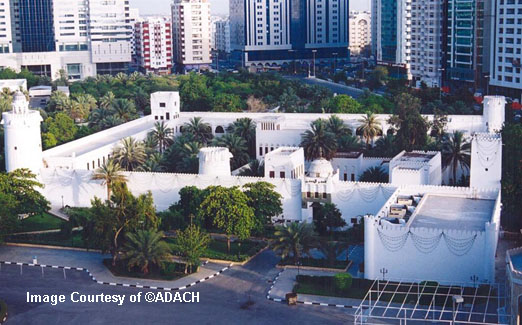ID :
313117
Wed, 01/08/2014 - 08:47
Auther :
Shortlink :
https://www.oananews.org//node/313117
The shortlink copeid
Abu Dhabi Tourism and Culture Authority reveals details of Qasr al Hosn Fort conservation project for first time

Abu Dhabi: Abu Dhabi Tourism and Culture Authority, TCA Abu Dhabi, has released details of the Qasr al Hosn conservation project for first time.
The fort, which has stood since the mid-1700s as the symbolic birthplace of the emirate, is undergoing a comprehensive project of conservation and restoration.
A team of historians and architects are carefully removing parts of the thick white gypsum and cement render that was applied to the walls of the fort in the 1980s, revealing once again the original coral and sea stone masonry used in traditional Emirati construction.
This work is essential to prevent moisture from being trapped on the surface of the coral stone, which currently lies beneath the modern white render.
The courtyard areas of the palace and former inner fort will be opened to visitors on guided tours at the annual Qasr al Hosn Festival from February 20th to March 1st. Every year at the festival, visitors will be able to witness the progress on Abu Dhabi's most important historical project. The festival is held under the mandate of the Abu Dhabi Tourism and Culture Authority.
Sheikh Sultan Bin Tahnoon Al Nahyan, Chairman of Abu Dhabi Tourism and Culture Authority, said, "The principle approach at Qasr Al Hosn is to strengthen the appreciation of Emirati heritage and identity. Qasr Al Hosn is the centre piece of a new regional cultural quarter and is being restored using international standards of conservation best practices that are recognised for the management of World Heritage assets." Expanding on the role of TCA Abu Dhabi, Sheikh Sultan added, "The project will provide a different experience for every visitor, enabling each of them to have their own personal relationship with Qasr Al Hosn and to gain an understanding of the values and identity of Emirati heritage." Mark Powell Kyffin, Head of Architecture, TCA Abu Dhabi, has been leading the project since its inception and is intimately familiar with the architectural history of the Qasr al Hosn site.
"The layers of modern render that were added in the 1980s are suffocating the traditional construction of the historic walls," said Mr. Kyffin.
"Air conditioning, which was also introduced into the building in the 1980s, can cool the building to 24c. The combination of this internal cooling and the high ambient external temperatures causes condensation to be trapped within the walls of the building on the surface of the coral stone." Qasr al Hosn began life in the 18th century as a coral and sea-stone watchtower built by the Bani Yas tribes on Abu Dhabi to command coastal trade routes and to protect the settlement that had grown around the water sources they discovered on the island.
Successive generations of the ruling Al Nahyan family added walls, towers, decorative entrances and residential quarters to create their ancestral home, transforming it first into an imposing fort, then into an iconic palace.
Peter Sheehan, Head of Historic Buildings, TCA Abu Dhabi, has been working on the project from the outset, when he carried out the initial archaeological investigations aimed at understanding the construction sequence of the fort and informing the current conservation works.
"It's a methodical process and we're working as carefully as we possibly can," he said. "Our job is to ensure that this building is conserved to the highest possible standards, so that both present and future generations can appreciate the evolution of the fort and its historical and cultural significance." - Emirates News Agency, WAM





